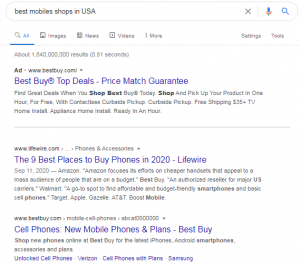— June 24, 2019
What will it be like to work in the year 2029? I’m a futurist – let me paint you a picture. A decade from now imagine going into work… and yes some people will still work in offices 10 years from now. Imagine it’s a Monday and you’re headed into the office. But in 2029, you will work in a sentient office building. Your building is filled with sensors and the Internet of Things (IoT) all computing and sharing data that is being processed by Artificial Intelligence (AI). This AI is making decisions and optimizing itself. But your building isn’t alone; it’s surrounded by a smart city that is teeming with autonomous vehicles on land (cars), sea (boats), and air (drones).
Now imagine walking into your sentient building and the building knows you as an individual. It knows how you like to communicate. For example, are you an introvert or an extrovert? Are you more productive in the morning or in the afternoon? It also knows your coworkers. All of this data and information will be kept private and secure, but it will be used so that the building can optimize itself. The office will make itself more efficient and help workers to be more productive as a result; it’s working hard to digitally and physically keep everybody secure so that they feel safe.
Let’s say on a particular day your 2029 office building knows that you’re not having a great Monday. You’re tired and a little grumpy. The office also has a sense of humor…
When you walk into the elevator to go up to your floor, you stand there by yourself. The doors close and the office building tells you a really funny joke. It gives you a laugh on an otherwise dreary morning, making your day just a little bit better.
A decade from now a constellation of technologies, including AI, smart cities, IoT, and autonomy in land, sea, and air, are going to radically change the workplace. Many of these advanced technologies have already begun to change how we work and specifically how we do HR. But in this future of amazing technologies, how do we make sure that we don’t loose ourselves? How do we keep work human? Here are three steps to do just that:
1. Always keep humans at the center
As professionals, we have to remember that everything we do is about and for people; it begins with people and ends with people. There may be an increasing amount of technology, processes, and procedures in between, but what we do always begins and ends with people.
As we look to the future this becomes even more important as technologies move into HR and the workplace. Some of these HR technologies will take over existing jobs. Some will create new jobs. Ultimately these HR technologies will change the nature of how we value human labor. Just imagine if machines end up doing every part of a certain task. We would value it very differently, especially when you put it side-by-side with human labor.
This is why we need to make sure we keep work human. Otherwise, if we lose sight of keeping humans at the center, it will only lead to bad business results.
2. Don’t imbue technology with too much intelligence
As technologies make their way into the workplace and into HR, they’ll make us more productive and we’ll be able to get more done in less time and with less people. These HR technologies will allow us to connect more easily and quickly with people who we may not have found previously. It will also give us unprecedented control over workplace cultures.
However, even though they’ll offer a wide array of new capabilities we have to make sure not to imbue them (specifically AI) with too much intelligence. We need to remember it’s still artificial; it’s not human intelligence. Remember that these HR technologies, although they help us get work done like no machine has helped us in the past, they are still just tools. It’s purpose is to be a tool for humans to leverage. For example, a hammer is just a hammer. Just because a hammer is better at driving a nail into a piece of wood than you are with your bare palm, it doesn’t mean that the hammer can design a house that you’d love.
It’s important to make a distinction around what you want these intelligent technologies to do. Always remember that they’re in service of you, your employees, and your organization. Giving them too much credit and too much intelligence will only give them too much power. If you end up believing algorithms know more than they actually do, your organization might face tough consequences. When we give up too much power and decision making control to technology, it is at our peril.
3. Understand the bias problem
In the past few years it has become accepted in the AI community, as well as the broader tech industry, that there is a bias problem. Autonomous digital technologies like AI and machine learning has a problem with inherent bias that can cause them to perform in an inappropriate manner.
This bias problem states that all data that drives these algorithms have bias. Engineered systems are optimized for a task or a specific area. Algorithms and systems are created and authored by people and organizations. These people and these organizations all have bias. They’re optimizing for a specific task or goal. This means that any data or results that come out of the systems will also have the same bias. Because of this we need to not only recognize bias, but also embrace it, actively work to identify it, and counter it.
Neglecting to keep work human is bad for business
Put simply, if we don’t keep work human, it’ll be bad for business. Giving too much decision power to these technologies and neglecting to include human oversight can lead to egregious errors. Similarly, not recognizing bias in our processes and procedures can lead companies to be out of compliance and possibly on the wrong side of regulations. Keeping work more human should be a top priority because it’s the right thing to do for you, your team, and your business.
Let me take you back to your sentient building and your Monday at work. As you walk off the elevator with a smile on your face from the funny joke that the elevator just told you to brighten up your gloomy Monday morning, you realize that your office building is constantly optimizing itself. It’s optimizing itself not only for efficiency, sustainability, safety, and security, but also for the well-being of every single person in your organization.
This is the true test of new HR technologies and amazing advances that are coming in the future. They will allow you to optimize for not only people, but also for the culture of your organization. In this way, the machines become an amplification of your organization’s values. These HR technologies can allow your workplace to be more human because it’s a living, breathing extension of everybody in your organization.
Business & Finance Articles on Business 2 Community
(22)



